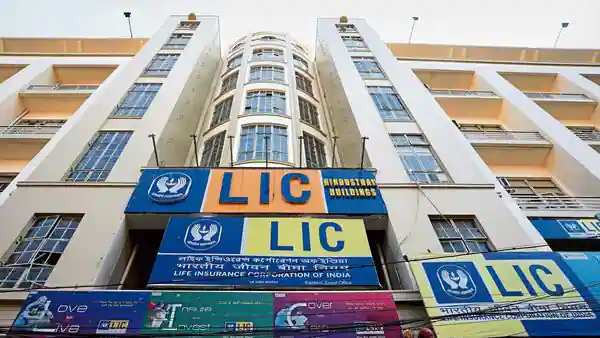LIC growth worsens, lags private rivals ahead of IPO – Mint

During the fiscal year so far, all top private life insurers have grown their new business premium faster than LIC—SBI Life Insurance by 25% to ₹22,613.4 crore; ICICI Prudential Life Insurance by 18% to ₹12,844.8 crore; Max Life Insurance by 16% to ₹6,510.75 crore; and HDFC Life Insurance by 22.52% to ₹21,136.7 crore.
The latest figures from the Insurance Regulatory and Development Authority of India (IRDAI) highlight one of the worst years for LIC, which is set to go public soon.
The insurer’s struggle to grow new business means its ability to generate profits to attract enough investors after listing will remain constricted, even though the government may well meet its objective to raise ₹65,000 crore by selling a 5% stake in the company.
“This may not augur well for the government’s aim to attract investors for LIC’s upcoming IPO. Investors already have better-performing life insurer stocks to invest in from the listed space since SBI Life, HDFC Life, and ICICI Prudential Life are steadily growing their new business. One would question why LIC’s stock should do well after the IPO, despite its ongoing failure to grow the core business,” the leader of insurance business at a large foreign consultancy firm said on condition of anonymity.
LIC has particularly failed to grow its March-quarter business, unlike other insurers.
During the January-February period, LIC earned new business of ₹30,425 crore as compared to ₹40,902 crore in the December quarter, ₹49,512 crore in the September quarter and ₹35,601 crore in the June quarter.
Even though March numbers are not yet in, this is an unusual trend for LIC as life insurers typically see better sales in the March quarter with many customers snapping up insurance policies to save tax.
In FY21, LIC’s new business in the March quarter stood at ₹54,170 crore, which was higher than each of the preceding three quarters.
In FY20, too, despite the nationwide lockdown, LIC managed to earn new business premium of ₹40,942 crore in the March quarter and ₹1.84 trillion for the full fiscal.
This fiscal, however, the insurer has clearly lagged, and in order to record positive year-on-year growth for this March quarter or for the full fiscal, it needs to earn over ₹24,000 crore in March alone, a tough feat.
Compared to private peers, LIC’s network is larger and older, and it is typically expected to perform better than rivals in the March quarter.
Instead, it is struggling to prevent loss of market share.
Private insurers have steadily eroded LIC’s market share over the years, despite the state-run insurer’s massive network of agents now busy convincing policyholders to invest in LIC’s IPO.
LIC’s setback comes from two key segments—individual single premium policies and group non-single premium products.
According to IRDAI, during this fiscal, LIC’s new business has fallen by 21% to ₹20,787 crore in the individual single premium segment and by 49.6% to ₹2,672 crore in the group non-single premium segment.
Group single premium and individual non-single premium segments have shown marginal growth during this fiscal.
LIC’s individual non-single premium segment has grown by barely 8.8% to ₹24,514 crore this fiscal.
On the other hand, private life insurers have grown their individual single premium business by 27% to ₹14,709 crore, group non-single premium business by 40% to 356.43 crore and individual non-single premium segment by 24% to ₹44,705 crore this fiscal year.
LIC’s segment-wise business losses highlight the insurer’s struggle to acquire new customers and retain existing ones, primarily in the retail segment, eroding its retail market share.
With its way of doing business unchanged over decades, LIC may continue to lose its stronghold in the retail life segment, particularly in the high-ticket space.
With the bank channel increasingly becoming important for savings product distribution and digital channels becoming important for retail protection, LIC may face turbulent times in terms of growth due to its heavy dependence on the agency-led distribution channel, lack of enough bancassurance business and failure to transform itself adequately to adapt to the rapid digitalization of consumer-centric processes.
Subscribe to Mint Newsletters
* Enter a valid email
* Thank you for subscribing to our newsletter.
Never miss a story! Stay connected and informed with Mint.
Download
our App Now!!






